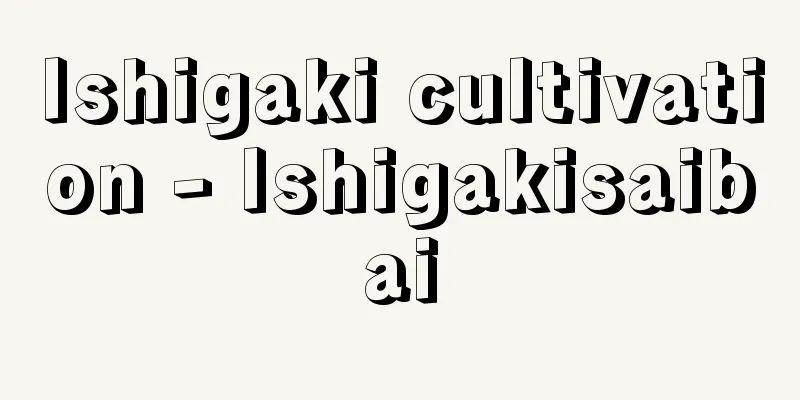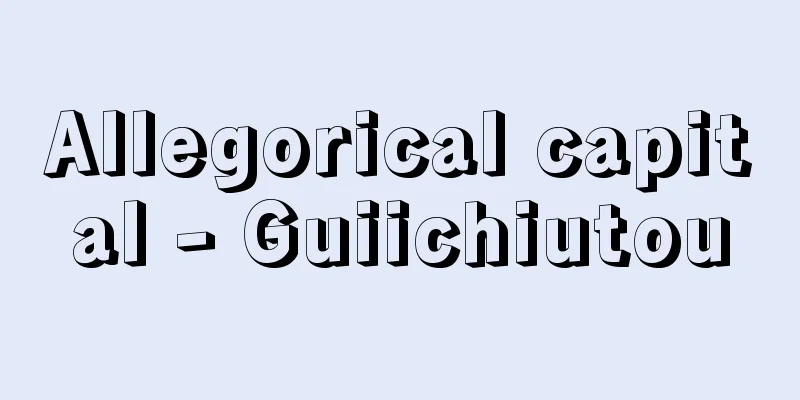Gold ban lifted - gold ban lifted

|
To liberalize the export of gold and return to the gold standard. In Japan, it was implemented on January 11, 1930 (Showa 5). During World War I, many countries suspended the gold standard, and Japan also suspended the gold standard on September 12, 1917 (Taisho 6) by issuing a Ministry of Finance order requiring permission to export gold, effectively suspending the gold standard and allowing the exchange rate to float according to the market rate at the time. After World War I, international opinion in favor of restoring the gold standard grew, and in 1922 the Genoa Conference, attended by representatives of the governments of major countries, supported this. Japan missed the opportunity to lift the gold embargo due to the post-war recession, followed by the Great Kanto Earthquake and financial panic, but in 1928 (Showa 3), France returned to the gold standard, leaving only six of the major 32 countries, including Japan, that had not yet returned to the gold standard. During this period, the exchange rate fell from $48.84.5 per 100 yen at the old parity to $38 after the earthquake, but recovered to an average of $46-47 per year during the Showa era. However, the wild fluctuations in the exchange rate due to speculation hindered normal international transactions, and domestic public opinion also longed for a return to the gold standard. In July 1929, the Hamaguchi Osachi Cabinet of the Minseito Party, whose party policy was to immediately lift the gold ban, was formed, and Inoue Junnosuke was appointed Minister of Finance. He immediately began preparations for lifting the ban, cutting the budget and promoting a deflationary policy through austerity measures, trying to bring domestic prices in line with international prices, and setting up a credit of 100 million yen from the American and British banks to increase gold reserves. In November, he announced that the gold ban would be lifted in January 1930. The intention of Prime Minister Hamaguchi and Finance Minister Inoue was to streamline industry under stable exchange rates, increase the international competitiveness of the Japanese economy, and normalize the economy through the economic adjustment function of the gold standard. However, lifting the ban under the old parity was tough because the yen was slightly strong compared to the actual state of the Japanese economy, and the Great Depression, which began with the stock market crash on Wall Street in New York in October 1929, became more serious than predicted by domestic and foreign experts, and exports slumped due to a drop in overseas prices that exceeded the drop in Japanese prices caused by deflationary policies, and the Japanese economy fell into an unprecedented recession. Inoue maintained the policy of maintaining the gold standard and continued austerity measures. However, when the Manchurian Incident broke out in September 1931 and Britain then suspended the gold standard, there was active selling of yen and buying of dollars due to the speculation that Japan was close to embargoing gold again. Inoue tried to defend himself by buying up the yen, but the outflow of gold continued, making it difficult to maintain the gold standard. On December 13 of the same year, the Inukai Tsuyoshi Cabinet was formed and Takahashi Korekiyo became the Minister of Finance. He immediately re-banned the export of gold, bringing an end to Japan's gold standard. [Tokuko Omori] "Showa History 2: The Showa Depression" by Masanori Nakamura (1982, Shogakukan)" ▽ "Showa Depression" by Yukio Naga (Iwanami Shinsho)" ▽ "Showa Depression and Economic Policy" by Takahide Nakamura (Nikkei Shinsho) [References] | | |Source: Shogakukan Encyclopedia Nipponica About Encyclopedia Nipponica Information | Legend |
|
金の輸出を自由にし、金本位制に復帰すること。日本では1930年(昭和5)1月11日実施。第一次世界大戦中各国が金本位制を停止するなかで、日本も1917年(大正6)9月12日、金の輸出を許可制とする大蔵省令公布により、事実上金本位制を停止し、為替(かわせ)は時の相場によりフロートする体制となった。第一次世界大戦後、金本位制再建の国際世論が高まり、1922年主要国政府代表の参加したジェノバ会議はこれを支持した。日本は大戦後の不況に続いて、関東大震災、金融恐慌が起こり、金解禁の機会を逸していたが、1928年(昭和3)フランスの金本位復帰により、主要32か国中で復帰を果たしていない国は、日本を含め6か国を残すのみとなった。この間、為替相場は旧平価100円につき48ドル84.5セントに対し、震災後一時38ドル台に低下したが、昭和年代には年平均46~47ドルに回復したものの、投機による相場の乱調な上下は正常な国際取引を阻害したから、国内の世論もまた、金本位制への復帰を待望した。1929年7月、金解禁即時断行を党是とする民政党の浜口雄幸(おさち)内閣が成立すると、蔵相に井上準之助を据え、ただちに解禁の準備に着手、予算を削減して緊縮財政によるデフレ政策を推進し、国内物価の国際物価へのさや寄せを図るとともに、金準備の充実のため、米英銀行団からのクレジット1億円を設定、11月に、翌1930年1月に金を解禁すると予告した。浜口首相、井上蔵相の意図は、為替安定下に産業を合理化し、日本経済の国際競争力を高め、また、金本位制の景気調節機能によって、経済を正常化することにあった。しかし旧平価による解禁は、日本経済の実勢に対しやや円高で厳しいものであったうえに、1929年10月ニューヨーク・ウォール街の株式暴落に始まった世界恐慌は、内外識者の予測を裏切って深刻化し、デフレ政策に伴う日本の物価低落を上回る海外物価の低下により、輸出は振るわず、日本経済は未曽有(みぞう)の不況に陥った。井上は金本位制維持の方針を堅持して、緊縮財政政策を続けた。しかし1931年9月、満州事変が勃発(ぼっぱつ)し、ついでイギリスが金本位制を停止すると、日本の金再禁止間近しとの観測から、円売りドル買いが盛んに行われた。井上は円を買い支えて防戦に努めたが、金の流出が続き、金本位制維持は困難となった。同年12月13日、犬養毅(いぬかいつよし)内閣が成立し高橋是清(これきよ)が蔵相に就任すると、ただちに金輸出再禁止が実施され、日本の金本位制は終焉(しゅうえん)した。 [大森とく子] 『中村政則著『昭和の歴史2 昭和の恐慌』(1982・小学館)』▽『長幸男著『昭和恐慌』(岩波新書)』▽『中村隆英著『昭和恐慌と経済政策』(日経新書)』 [参照項目] | | |出典 小学館 日本大百科全書(ニッポニカ)日本大百科全書(ニッポニカ)について 情報 | 凡例 |
>>: Kimhae Kara (English spelling)
Recommend
Motherwell, R.
...Originally, it was derived from Pollock, who w...
Kleist, K.
…Since language, behavior, and cognition are tool...
Happoone
This ridge extends eastward from Mt. Karamatsu (2...
Checkers - Checkers (English spelling)
A type of board game played by two people. It is ...
Yunzhou (China)
…It has been a base for the nomadic tribes of the...
Ovulation - No
This refers to the release of an egg from the ova...
Masaaki Maeda
Year of death: August 11, 1921 Year of birth: 12 M...
Antonio Fogazzaro
Italian author. Born and raised in Vicenza in a r...
bouquet
…It is also called flower design, a term that has...
Caricature - Caricature
… With the rapid advances in printing technology ...
Smoke generator - Hatsuenzai
A chemical that undergoes a chemical reaction at r...
general recursive function
…Next, μ yR (*, y ) is defined as the minimum num...
Securities registration statement - Yuukashoken todokeidesho
Based on the Financial Instruments and Exchange Ac...
Aiki
…In a broad sense, it refers to a Japanese martia...
Return to the Castle - Genjoraku
The name of a Gagaku piece. It is also called &qu...









